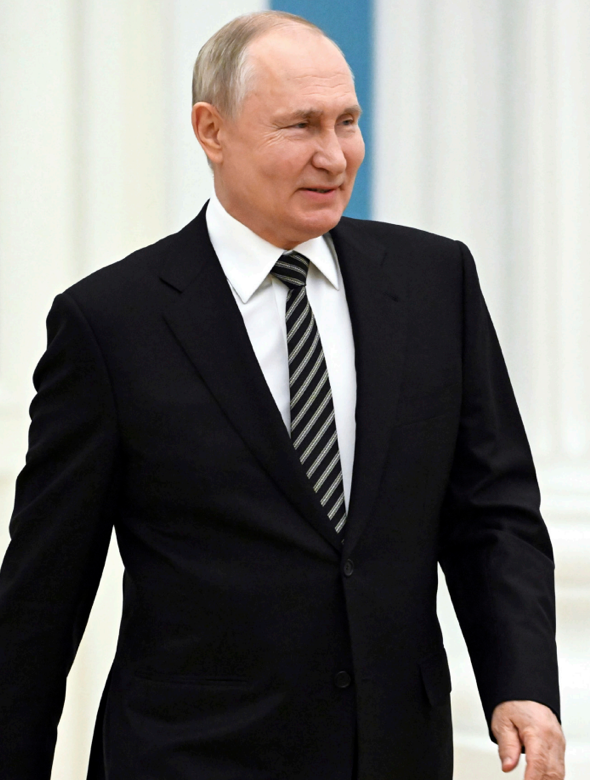
Russian President Vladimir Putin privately expressed op-
penness to a ceasefire in the Ukraine War late last year. Photo courtesy of AP News.
The Biden administration promotes the idea that continuing to send aid to Ukraine is essential to Ukraine’s democracy andAmerican security. In a Jan. 19 meeting with American mayors, Biden claimed, “If we walk away, and Russia is able to sustain their onslaught and bring down Ukraine, what do you think’s going to happen in the Balkan countries?” But this view ignores the realities of the Russian military and reveals a misunderstanding of Putin’s motives, which have more to do with securing Russia’s sphere of influence over Ukraine from NATO than any imperialist designs that encompass the rest of Eastern Europe. Based on this information, continuing to aid Ukraine does not make the U.S. safer. In contrast, it allows Russia to take more territory and inflict more casualties while also setting the stage for a possible nuclear escalation between Russia and NATO.
Ukraine has received no shortage in aid thus far — over $230 billion in total according to Visual Capitalist — but this aid did not help Ukraine achieve substantial gains in its summer counteroffensive. Ukraine’s failures were strategic; a spread-out offensive that lacked sufficient airpower against the Russian military’s advantage in fortifications, landmines, and manpower was doomed to fail. Western officials expected this result, but were unreasonably hopeful that Ukrainian “courage and resourcefulness would carry the day.” “More and better equipment always helps, so surely the offensive would have made more progress with more advanced weapons,” writes Stephen Bittle, adjunct senior fellow for Defense Policy at the Council on Foreign Relations, in Foreign Affairs. “But technology is rarely decisive in land warfare, and none of these weapons were likely to transform the 2023 offensive.” This result indicates that American aid cannot will Ukraine to absolute victory against Russia, no matter the amount, short of a military intervention, it provides.
At this point in the war, Russian manpower and defensive manufacturing capabilities threaten to overwhelm Ukraine’s defenses. This situation puts its political existence at risk, which is the antithesis of the the U.S.’s goals. Russia is gaining the upper hand in drone combat as it copies Ukraine’s usage of first-person view drones through its greater spending and organization of supply lines. It is possible that Ukraine can regain the drone upper hand, but this would require greater military spending and aid by the U.S.
Providing greater aid to Ukraine facilitates a longer
war and is unlikely to break the stalemate. Besides the cost of
Ukrainian lives, a prolonged war also invites the possibility of a broader Russia-NATO confrontation — especially as NATO conducts the Steadfast Defender 2024 drill — which could draw the U.S. into a conflict with a nuclear power. The Kremlin has made nuclear threats over Ukraine in the past and it is unlikely they would face domestic opposition to that choice. “The hard truth is that at the moment, the Kremlin does not intend to use nuclear weapons and so the only hydrogen bomb rhetoric comes from the occasional pro-Kremlin commentator in the media,” explains Maxim Starchak in an article for the Center for European Policy Analysis. “And yet, if the government did decide to change its rhetoric and make policy more genuinely threatening, using all the tools at its disposal, public opinion would likely fall into step. As it has numerous times in the past.”
Therefore, the most prudent approach would be for the U.S. to encourage Ukraine to pursue a ceasefire, which Putin has privately expressed openness to. While it is not a perfect option, this policy would protect Ukraine provisionally and avoid the catastrophic possibility of nuclear escalation.
















